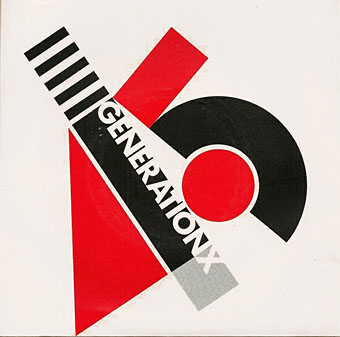
Your Generation (1977) by Generation X. Design by Barney Bubbles.
Continuing an occasional series about the work of particular artists or designers being used on record sleeves. El Lissitzky (1890–1941) is an interesting candidate in this area since his pioneering abstractions have greatly influenced subsequent generations of graphic designers. As a result of this you’re just as likely to find his Suprematist style being pastiched on an album cover as find one of his paintings decorating the sleeve. Pastiches are difficult to locate unless you already know they exist—or unless the album credits acknowledge the style they’re imitating—so this list will no doubt be incomplete.
Barney Bubbles’ design for the debut single by Generation X is the earliest example I’m aware of that makes use of the El Lissitzky style. It was also one of Bubbles’ first sleeves for a punk band, and a significant break with his often florid hippy designs.
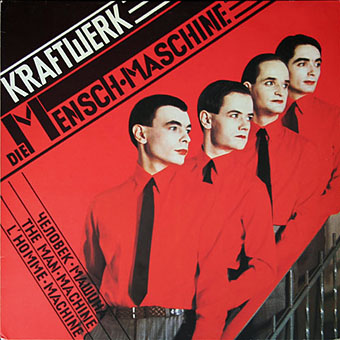
Die Mensch Maschine (1978) by Kraftwerk. Design by Karl Klefisch, “inspired by El Lissitzky”.
Kraftwerk’s seventh album uses Lissitzkian typography and graphics on its front and back covers. A very popular album with the post-punk crowd that would have been the first introduction for many people to El Lissitzky’s name. Kraftwerk still use that vibrant arrangement of black, red and white in their stage shows.
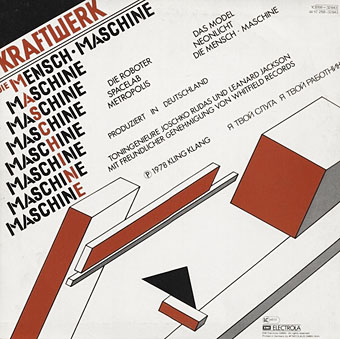
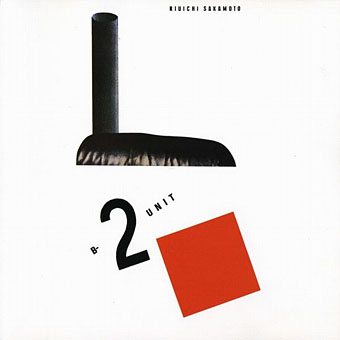
B-2 Unit (1980) by Riuichi Sakamoto. Design by Tsuguya Inoue.
More pastiche, this time borrowing from El Lissitzky’s Suprematist book for children: About Two Squares: In 6 Constructions: A Suprematist Tale (1922). The book’s two characters of a red square and a black square appear on the vinyl labels. This is a great album, incidentally, still my favourite by Sakamoto.
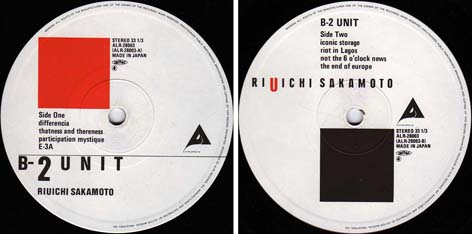
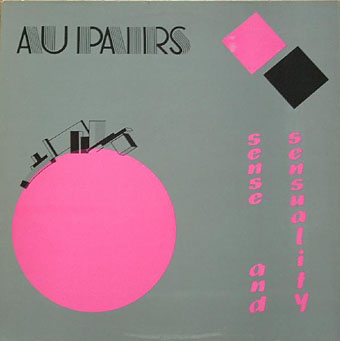
Sense And Sensuality (1982) by The Au Pairs.
Another borrowing from A Suprematist Tale only now the reds have turned pink. Not a very adept use of typography which is a considerable failing when the book the artwork is copied from contains many better suggestions.
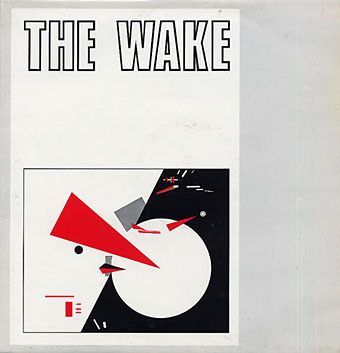
Something Outside (1983) by The Wake. Artwork: Beat the Whites with the Red Wedge (1920).
The Wake were signed to Factory Records but their career has been overshadowed by their more successful label-mates. The artwork is El Lissitzky’s famous propaganda poster with the slogans removed.
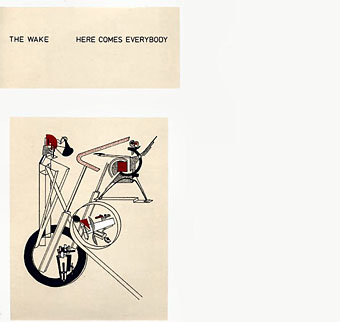
Here Comes Everybody (1985) by The Wake. Design by Jackie Gribbon & The Wake. Artwork: Part of the Show Machinery (1923).
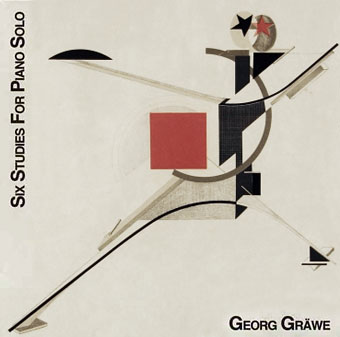
Six Studies For Piano Solo (1988) by Georg Gräwe. Artwork: First Kestner Portfolio: Proun (1924).
El Lissitzky’s “Proun” on this cover can be seen in miniature on the Wake sleeve that precedes it.
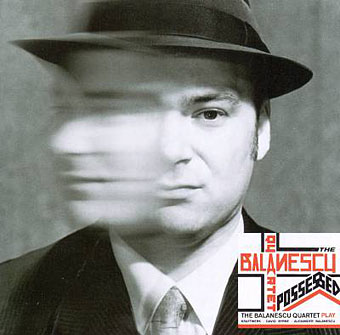
Possessed (1992) by The Balanescu Quartet. Design by T&CP Associates “with a Nod and a Wink Towards El Lissitzky”.
A minimal usage for an album which is predominantly string-quartet arrangements of Kraftwerk songs.
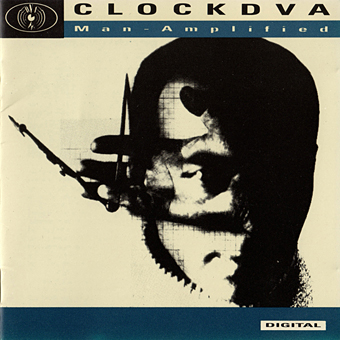
Man-Amplified (1992) by Clock DVA. Artwork: The Constructor. Self-portrait with Circle (1924).
Clock DVA by this point had abandoned their organic Industrial style for total electronics. The album title and the lyrics of Man-Amplified were evidently intended as a kind of cyberpunk upgrading of Kraftwerk’s Man-Machine concept—which may explain the El Lissitzky artwork—but the results sound rather dated today.
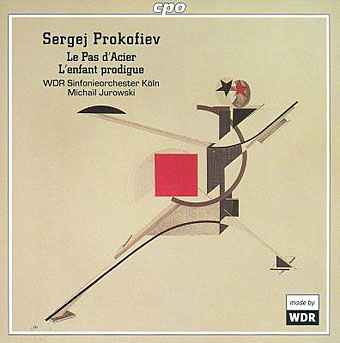
Sergei Prokofiev: Le Pas d’Acier; L’enfant prodigue (2003); Michail Jurowski, WDR Sinfonie Orchester Köln. Artwork: First Kestner Portfolio: Proun (1924).
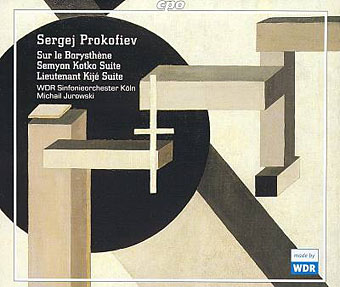
Sergei Prokofiev: Sur le Borysthène; Seymon Kotko Suite; Lieutenant Kijé Suite (2004); Michail Jurowski, WDR Sinfonie Orchester Köln. Artwork: Proun 10 (detail) (1919).
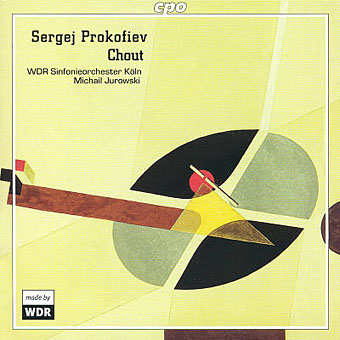
Sergei Prokofiev: Chout (2004); Michail Jurowski, WDR Sinfonie Orchester Köln. Artwork: Proun G7 (detail) (1923).

Michael (2004) by Franz Ferdinand. No designer credited. Printed in variant shades.
Many of Franz Ferdinand’s early releases either alluded to or borrowed from the avant-garde imagery and typography of Soviet artists. These two singles take El Lissitzky for a model, with This Fffire being a variation on the Red Wedge design.

This Fffire (2004) by Franz Ferdinand. No designer credited.

No Balance Palace (2005) by Kashmir. Artwork: Design for the Abstract Cabinet (1927).
An album co-produced by Tony Visconti which perhaps explains its guest appearances from David Bowie and Lou Reed.
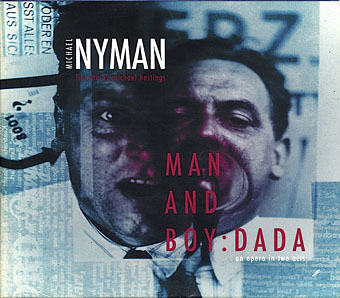
Man And Boy: Dada – An Opera In Two Acts (2005) by Michael Nyman. Design by Russell Mills & Michael Webster. Artwork: Portrait of Kurt Schwitters.
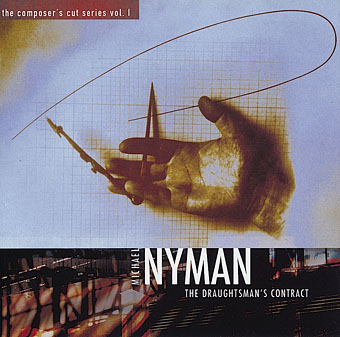
The Draughtsman’s Contract (2005) by Michael Nyman. Design by Russell Mills & Michael Webster. Artwork: Untitled (Hand with a Compass) (1924).

Swallow Smile (2006) by Franz Ferdinand. Design by Kris Heding.
Ending as we began with a 7″ single, unless there’s more to be added. As usual, if you know of any omissions then please leave a comment.
Elsewhere on { feuilleton }
• The album covers archive

I see an influence here: http://www.discogs.com/viewimages?release=263584
http://www.discogs.com/viewimages?release=104172
Those are more reminiscent to me of Constructivists like Rodchenko (who Franz Ferdinand have also swiped from) than Lissitzky who has a much more spare, abstract style. Rodchenko has been just as influential, possibly more so since his designs used more photos and slogans:
http://flyergoodness.blogspot.co.uk/2011/09/vintage-constructivist-graphic-design.html